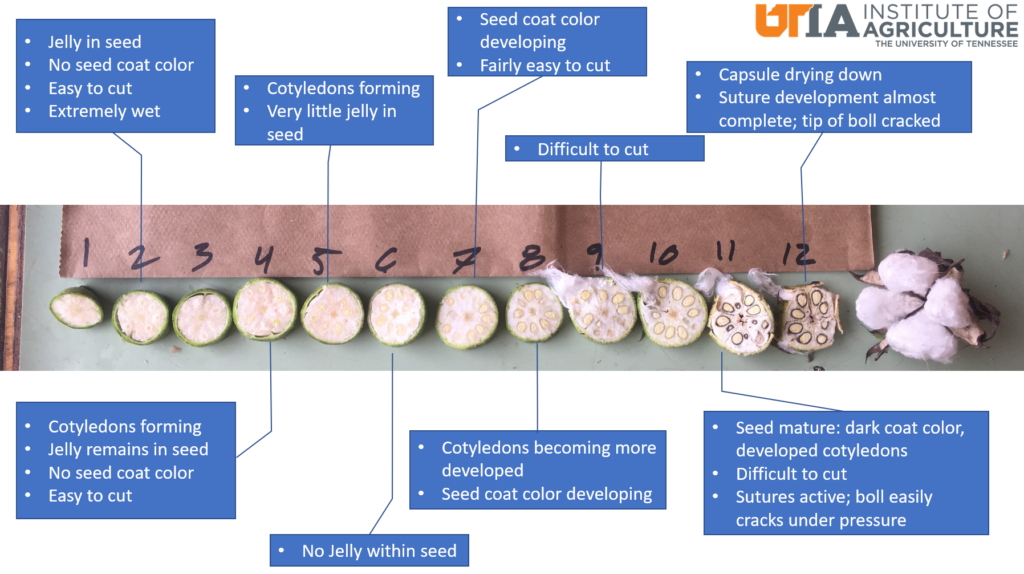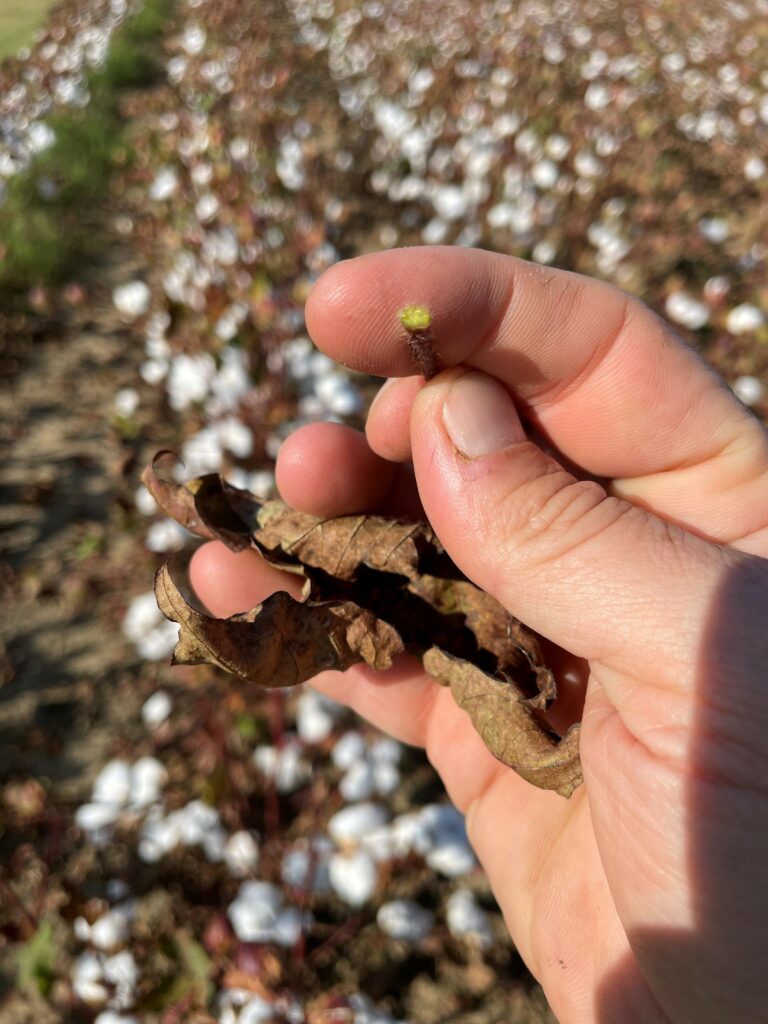 Many in West Tennessee have begun defoliating and questions on timing have been pouring in. In this blog, I rehash results from an old survey on boll maturity, give a few additional pointers on timing defoliation, and share a few thoughts on concoctions as we move towards the end of September.
Many in West Tennessee have begun defoliating and questions on timing have been pouring in. In this blog, I rehash results from an old survey on boll maturity, give a few additional pointers on timing defoliation, and share a few thoughts on concoctions as we move towards the end of September.
Almost two years ago, with some help from many other cotton agronomists, I conducted a survey on which boll cotton agronomists thought they could open. You can find the original article by following this link. Defoliation and boll opening applications have begun on our earliest planted acres, but not all acres are currently ready- evidenced by slicing uppermost harvestable bolls which are not yet mature. At the time of harvest aid application, I want my uppermost harvestable to be at a 7 or greater on the above scale, and most of my colleagues would agree. Boll numbers lower than that may not open.
I understand the desire to get everything out as quickly as possible, but we are still almost two weeks away from the first day of October. Even with cool temperatures, the bolls we are trying to mature are high in the canopy and are receiving plenty of sunlight and decent mid-afternoon temperatures. We have a little time to allow the remainder of this crop to mature.
Thidiazuron (Dropp, Daze, FreeFall) is one of my favorite cotton defoliant because it typically causes leaves to shed while still green and has excellent activity on juvenile leaves. However, thidiazuron is our most temperature-dependent product- in my opinion, night temperatures need to be in the 60s with daytime temperatures in the 80s to see good activity. If your temperatures within the five days following the application fall below this range (60-80) I would also run Folex in the mix at 4-7 ounces per acre, with Folex rate increasing as temperatures decrease. I’ve found that if the temperature range is closer to 55-75, you would be better off not running Thidiazuron at all and instead increase your Folex rate.
Our main reason for increasing Folex rate as temperature drops is to increase activity on the juvenile leaves on the plant. As you know, these are leaves the plant values- they represent a considerable investment from which the plant has yet to fully realize (peak photosynthetic output of a cotton leaf typically occurs closer to leaf maturity). As such, it is often hesitant to shed these leaves with light injury; expect greater levels of injury to be required to get an active abscission zone (see below).
Take home:
This week looks to be a good week for our typical three-way mix; 2 ounces of Thidiazuron, 5 ounces Folex, and 12-24 ounces of a 6lb Ethephon. Unless the forecast changes before next week, I’ll drop Thidiazuron out of my mix by the end of this week and begin running higher rates of Folex. Keep in mind the conditions prior to and following the application influence response and big shifts in temperature or rainfall can complicate leaf shed and boll opening.

